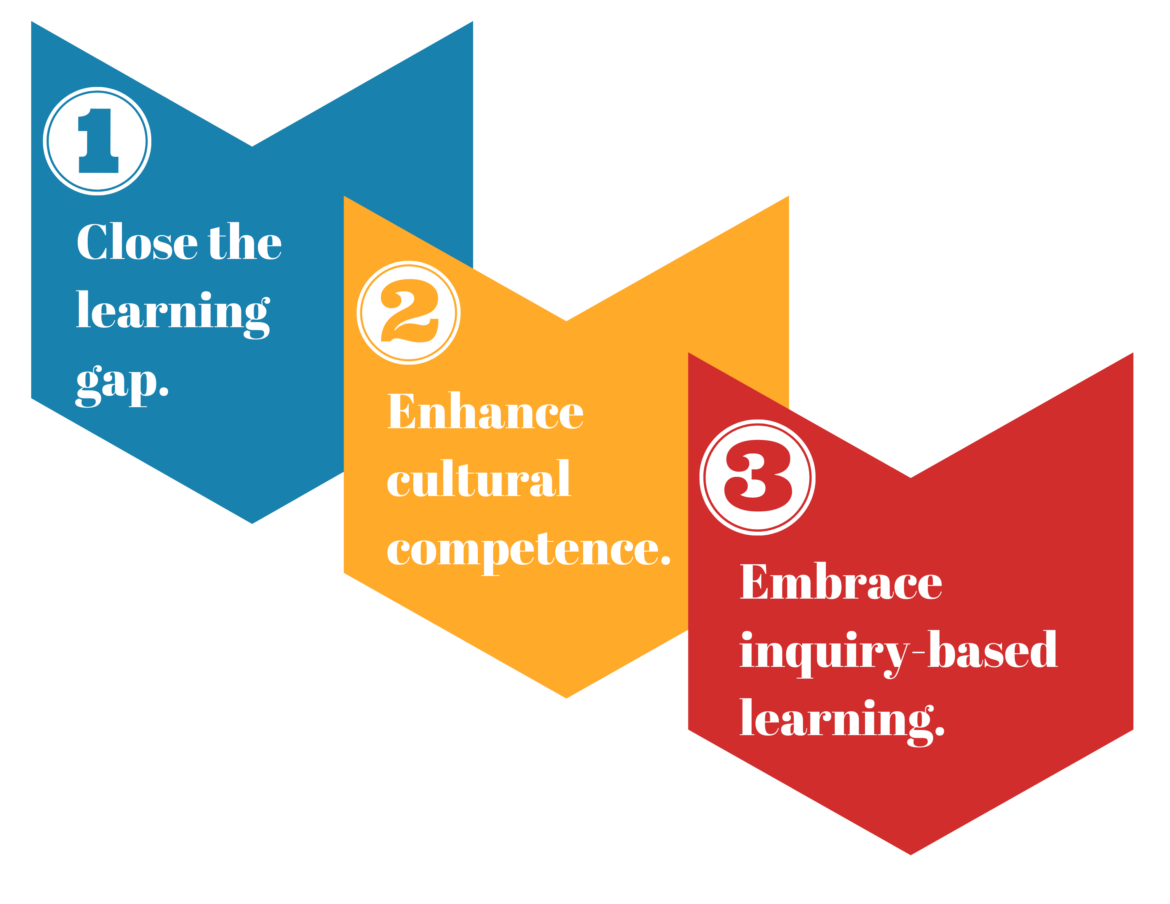Dear TCEA Responds:
How do you go about strengthening Tier 1 instruction while also addressing Tier 2/3 needs with a multi-tiered system of support (MTSS)? Share best practices!
Thanks, Lucinda
Dear Lucinda,
Thanks so much for this insightful question. I recently read that if your Tier 1 instruction includes over 800 students, you need to improve. That is, improve your Tier 3 instruction. Let’s do a quick review of the three levels of instruction. I always have trouble remembering which is which!
The Three Tiers
The three tiers of instruction are as follows:
- Tier 1: Core Classroom Instruction. This is the instruction that all students get. It’s high-quality classroom-wide instruction and support.
- Tier 2: Targeted Small Group Instruction. This is instruction tailored to the needs of specific student groups. This instruction seeks to address a student’s gaps in skills.
- Tier 3: Intensive Individual Intervention. This involves instruction for students in small groups or one-to-one. Intensive support is provided often and in smaller groups.
The Texas Education Agency (TEA) defines multi-tiered systems of support (MTSS) as a “framework that focuses on intervention best practices.” It works “within the areas of academics, behavior, and social/emotional supports.” This framework addresses the need of the “whole child” and is centered around student needs.
“The goal of MTSS is to find struggling students early and provide intervention.”
Interventions have to align with available research. Progress monitoring data suggests what movement, if any, there should be between tiers.

Image Source: Dept. of Education, Massachusetts
Strengthening Tier 1 Instruction
It’s easy to see that evidence-based instructional strategies work well. Many educators may be unfamiliar with how to use evidence-based strategies. That is, how to use them to ensure student success.
Per the American Institutes for Research’s MTSS Center, here are some recommendations:
- Use evidence-based practices that yield desired outcomes
- Assess how effective the core program is for students struggling
- Supplement with additional programs or materials (source)
They also suggest that teachers build in the following elements:
- Daily small group instruction
- Increase opportunities for students to respond and receive feedback
- Maximized engagements by using prompts
Other Solutions Suggested
This TCEA Responds question came about as a result of a post on social media. Several responses appeared in reply. Some of those responses are paraphrased below:
- Try Whole School Agreement. This allows teachers to agree on a common language, models, strategies, and more. The purpose of this is for students to hear and see the same things year to year. Listen to this podcast about instructional coherence.
- Provide plenty of examples, models, and non-examples that students can examine in a critical way.
- Provide alternative assessments, brief lectures, one-on-ones, and small group sessions within 50-minute intervals.
- Use anchor charts, peer collaborations, visuals, and realia as needed.
- Strengthen Tier 1 instruction through solid, direct instruction addressing common misconceptions.
- Close gaps for Tier 2 and 3 through solid small group instruction to address specific/individual misconceptions. Do this while Tier 1 students are doing independent practice or group work.
- Rely on AVID strategies such as focused notes and metacognition.
Some more suggestions include:
- Explicit vocabulary instruction with references to earlier understanding and activities.
- Modeling different strategies using manipulatives during whole group instruction.
- Aggressive monitoring to check for misconceptions with instant feedback.
TCEA Solutions
Some suggestions you may find helpful appear below. While I am tempted to offer Amazing Lesson Design Outline (ALDO) to assist you in planning Tier 1, 2, and 3 interventions, you may want more.
I keep coming back to Peter Drucker.In a previous blog entry. I quote him and then share some suggestions:
“The largest and easiest gains in knowledge work come from redefining the task. They involve eliminating what need not be done,” says Peter Drucker. Didn’t get the results you want? Prune the unnecessary. Stop doing anything and everything that fails to move you towards those results. Are you a principal focused on achieving innovative learning? How you get there varies. (source).

Consider these offerings below from TCEA:
Tier 1: Supporting Universal or Core Instruction in a MTSS
TCEA has a variety of TechNotes articles focused on evidence-based instructional strategies. You can use ALDO to see how they can fit together to enhance behavior (e.g. social-emotional learning). Also, how to impact surface, deep, and transfer learning, as well as feedback.
Here is a short list of additional TechNotes resources:
- High-Effect Size Instructional Strategies and Digital Tools
- Coaching for Results, Part 4
- Blending High-Effect Instructional Strategies with the 5E Model
- Aligning Digital Tools to High-Effect Size Strategies
- Feedback
Also, a list of TCEA online courses:
- Evidence-Based Teaching
- Assessment-Based Feedback
- Strategies That Work, P1: Core Components
- Strategies That Work, P2: Surface Learning Strategies
- Kernel Essays for Writing and Reading
- Jigsaw Method
- Choice Boards for Educators
- Social and Emotional Learning
- Effective Math for Grades K-2
- Effective Math for Grades 6-8
- Effective Math for Grades 3-5
- Effective Math for Grades 9-12
Tier 2: Targeted Small Group Instruction in a MTSS
Some additional TechNotes articles:
- Reciprocal Teaching
- Classroom Discussion
- Five Tips for Giving Constructive Feedback
- The Jigsaw Method
Relevant online courses:
What else do you think might be useful? How would you have responded to this TCEA Responds query? Let us know in the comments.


4 comments
I believe your response to Lucinda may have the tiers reversed. If you have a lot of students in tier 3 you need to improve tier 1. You want most students in tier 1!
Dr. Barker, thanks for sharing your response. I am not sure I’m seeing the same breakdown on the tiers as you may be familiar with. I’m referring to the Texas Education Agency’s classification of tiers. You can see an overview in this one-page PDF – https://tea.texas.gov/academics/special-student-populations/special-education/mtss.pdf
I don’t disagree that you want most students in Tier 1.
Overview of the tiers per TEA:
Tier 1 includes high quality classroom-wide instruction and support for all students.
• Tier 2 provides targeted support to address a student’s gaps in skills.
• Tier 3 involves intensive support usually provided more often and in smaller groups.
With appreciation,
Miguel
Does TEA require a certain type of documentation of Tiered instruction or is it up to the district how they document?
What is required in PEIMS?
Hi there! I’m not absolutely sure. That said…
TEA doesn’t require one strict format for documenting tiered instruction—it’s really up to your district to decide on a method that works best for you. The key is that your documentation clearly shows which interventions were provided, how students were grouped or moved between tiers, and how their progress was monitored.
For PEIMS reporting, you’ll need to include important details like:
• The tier(s) of instruction used
• The number of students receiving each intervention
• Evidence of progress monitoring and academic outcomes
This flexible approach means you can choose a documentation style that fits your school’s needs while still meeting state requirements.
For more detailed guidance, you can visit the TEA website:
TEA Main Site – https://tea.texas.gov/
PEIMS Information – https://tea.texas.gov/academics/peims
Hope this helps,
Miguel